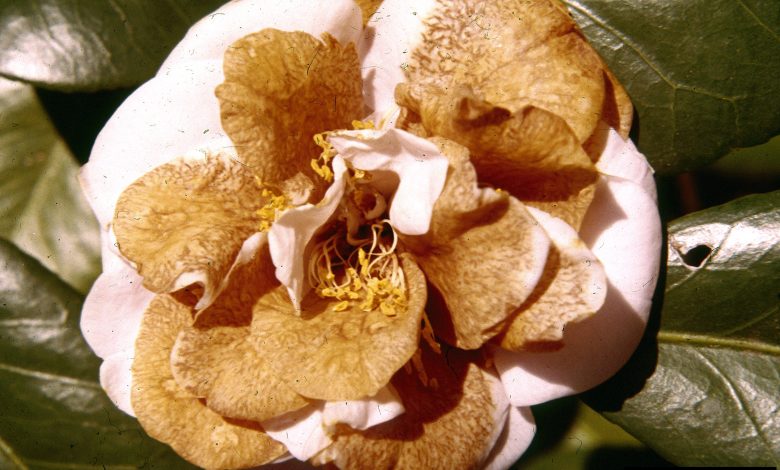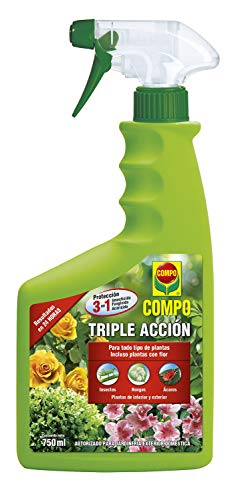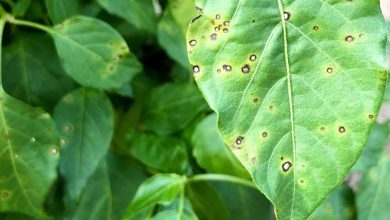Camellia Care: [Soil, Humidity, Pruning and Problems]

What characteristics does the camellia have?

The Camellia, of the genus Camellia, is a plant native to the Far East that came to Europe at the hands of a Jesuit priest named Camellus, who lived in the 17th century.
It comes from tropical and subtropical regions focused between China and Japan. But there is also a presence more towards the Southeast Asian fringe.
It has an indisputable elegant bearing thanks to its large flowers and varied shapes that depend on the variety.
There are species that grow as small trees and others as shrubs. They are evergreen and there are specimens that measure about 10 meters in height.
There are by the way about 250 different species, including trees and shrubs that bloom very generously. They are particularly resistant, because they begin to bloom at the end of December and remain active throughout the winter.
The simple flower plant, or simpler, has a corolla with five petals, as well as many visible stamens. But there are much larger species, known as the compound camellias, where their stamens are not visible to the naked eye, because there is a predominance of quite a few. petals that close more.
They have colors as striking as yellow, salmon, pink, purple or as discreet as white. There are even species with bicolor flowers, that is, the same plant can have flowers of various colors, either variegated or mixed. It symbolizes fortune, happiness and even longevity.
In Spain, the region of Galicia pays a spectacular cult to the Camellia, to the point that it is considered the flower of Rías Bajas. It is so popular that since 1965 the International Camellia Exhibition has been held.
A popular species capable of adapting to indoor spaces is the Camellia japonica. Other well-known ones are: the Camellia sinensis, known because an exquisite tea is extracted, the Camellia Sasanqua, among others.
What land needs does the camellia have?
An indisputable key to a good crop is to have a soil with an acid pH. To obtain it, all you have to do is add a layer of blonde peat, heather or chestnut soil.

The recommended fertilizer is made after flowering, with an acid fertilizer preparation for camellias or acidophilic plants or a product that contains iron chelates.

Another recommendation from experts is to apply a specific fertilizer to the irrigation water and apply it once in spring and once in autumn to stimulate sensational flowering.

How to make the camellia grow strong and vigorous?

One of its weak points is the high intolerance that the Camellia has to hot temperatures. That is why heating is one of your worst enemies.
The prudent thing then is to choose the coolest place in the house, where there must also be constant ambient humidity so that it can flourish without difficulties.
And if it is cultivated on terraces, the results will be equally positive as long as straw, mulch and pieces of bark are placed on the ground.
Even though it is quite resistant to cold, it must always be protected from frost and prevent it from freezing.
Another trick is to remove the plant from the terrace, away from windows or areas where cold air circulates and place the pot, inside the house, on a table and not on the floor on the coldest winter days. Plants with buds should be protected at night with a glass canopy or simple newspaper.
They are other effective ways to protect them from the effects of frost. Another key lies in constant lighting. It likes light but we should never allow the sun’s rays to invade it directly.
And if a transplant is going to be carried out, it is important to use an acid soil substrate, with very low pH peat so that the specimen remains healthy. Peat is easily improved with the help of a specific fertilizer for acid soil plants.
What humidity does the camellia need?
The ideal humidity is located in a percentage higher than 60%, with an estimated temperature between 5-12ºC. That is why irrigation is another of the keys to success. In summer it will be constant and in winter very shy, extremely moderate.
Experts recommend little water in the flowering season, which usually lasts three months. During this time, their peduncles strengthen in preparation to support the weight of the Camellia’s dense buds.

Of course, if the plant is kept in a pot, its drainage must be excellent, preferably with lime-free rainwater. If you don’t have it, then it’s good to resort to the following secret: we can drink tap water mixed with vinegar.
Is it necessary to prune the camellia?
One way to have abundant flowering is to trim all its branches, but cutting them all above the second or third bud, from the insertion of the bud. In this way, it will give many flowers in the following season.
How often should we prune the camellia?
The ideal time to prune a Camellia is just at the end of flowering. And if a transplant is going to be carried out, it is important to use an acid soil substrate, with very low pH peat so that the specimen remains healthy.
How can we avoid camellia pests and diseases?
One of the common problems faced by this exotically beautiful plant is the loss of its buds before they open. The causes? It is pertinent to control two factors: temperature and irrigation. If sudden changes in temperature occur, the Camellia will not resist and if we water it in excess, it will not do well either.
How to solve it? Simple. It is necessary to take the plant to a cool, bright place and water it only after it is verified that the soil has completely dried.

Another sign of disease is evidenced when its leaves turn yellow and the flower buds are stunned, they do not open. In this case, it is most likely that the soil does not contain the appropriate nutrients or the correct pH for acidophilic species such as camellias.
There is a very aggressive fungus called pestalozzia guepini capable of painting the leaves silver. If it is not combated with a good fungicide immediately and the damaged leaves are removed without letting them fall to the ground, then it causes the complete ruin of the Camellia, even killing it.

Rust is another detectable evil when lumps or bumps begin to appear on the leaves. It is controllable with the immediate application of a fungicide, because it is another very abusive fungus.
Maybe you are also interested in:

![Photo of Hanging Plants: [Planting, Care, Examples, Irrigation and Images]](https://www.complete-gardening.com/wp-content/uploads/2022/08/2_Lobelia-300x225-1-300x220.jpg)
![Photo of Marula Tree: [Planting, Care, Harvest, Irrigation and Characteristics]](https://www.complete-gardening.com/wp-content/uploads/2022/08/marula-tree-planting-care-harvest-irrigation-and-characteristics-390x220.jpg)
![Photo of Clivia Miniata: [Characteristics, Cultivation, Care and Disadvantages]](https://www.complete-gardening.com/wp-content/uploads/2022/08/clivia-miniata-characteristics-cultivation-care-and-disadvantages-390x220.jpg)
